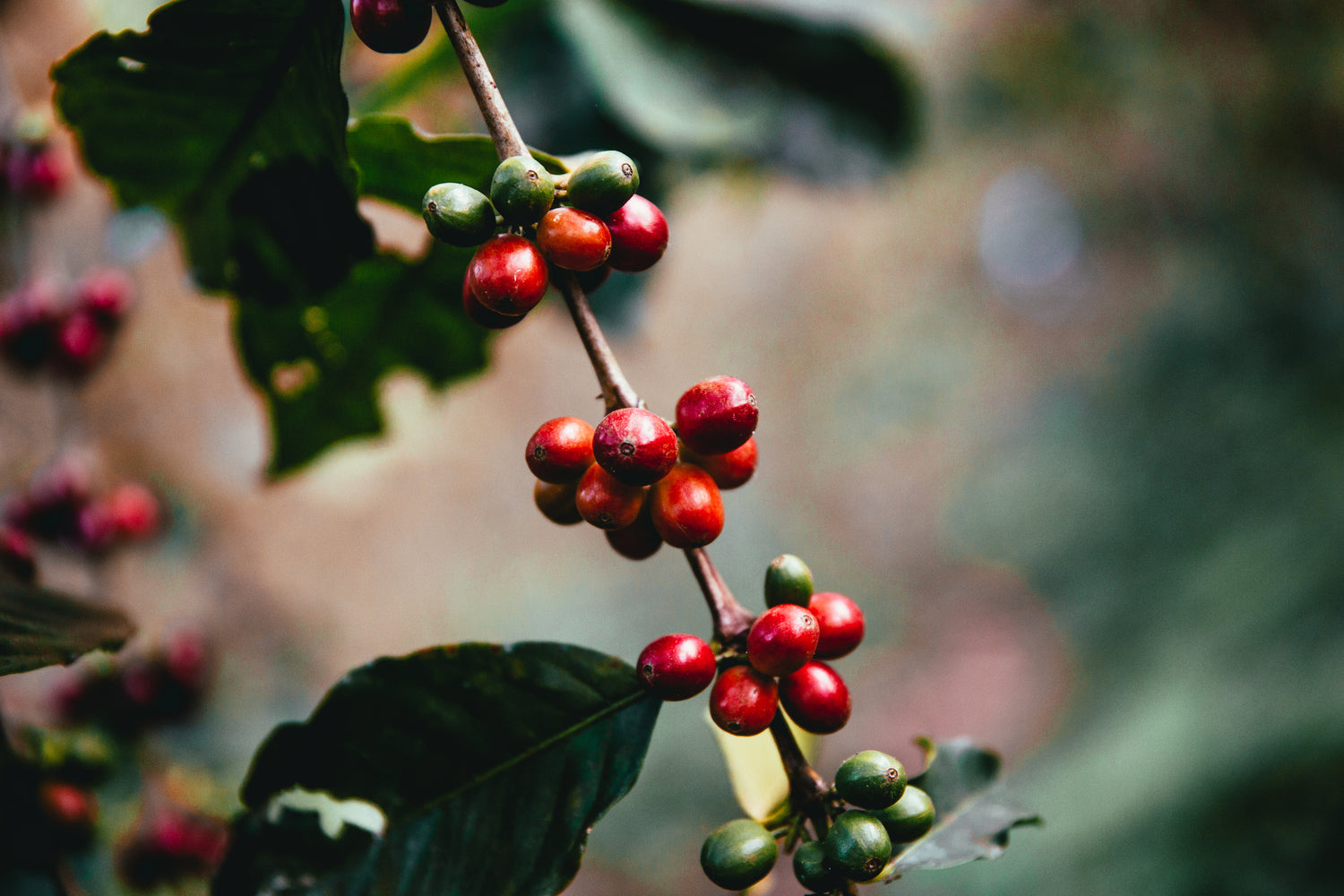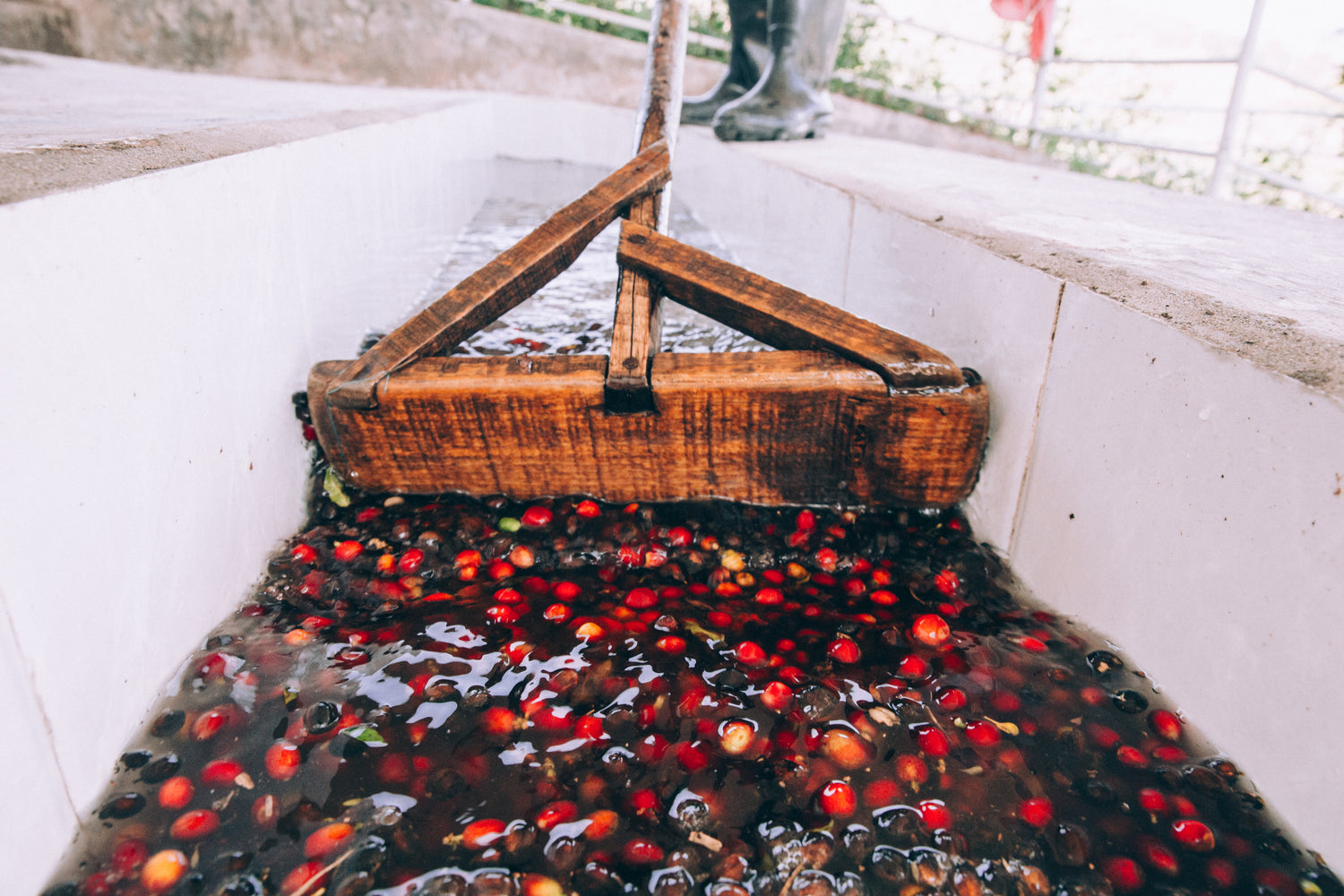Coffee 101: Farming
The coffee plant is an evergreen shrub that grows from sea level up to 6,500 feet in elevation, in approximately 60-80 countries between the Tropic of Cancer and the Tropic of Capricorn. Depending on the country, either an annual or semi-annual flowering will produce a crop of coffee cherries. Once the cherries have been harvested and processed, the cherry seeds are then sourced, roasted, and brewed for consumption. The wide variety of flavors found in coffee are directly related to the growing climate and processing method used to remove the cherry pulp from the seed.

North America
Mexico
Mexico's coffee industry has been isolated from the rest of the world until very recently. Since coffee reached the northern land of Mexico, it has been traded and consumed almost entirely within the country's borders. Through the efforts of western importers and direct trade coffee roasters, the amazing coffees grown in the tropical regions of Mexico have become available to the outside world.
Regions such as Huatusco, Veracruz, and Chiapas have been exploding with growth, despite the war against a potentially catastrophic fugus called "Roya" that can decimate an entire harvest depending on the species of coffee plant. Western science is helping to find species that will resist Roya and perpetuate the growth of Mexico's global coffee industry.

Central America
Nicaraguan
The quality of Nicaraguan coffees has been on the rise since the new millenium. After many years of conventional and co-op dominated production, we are seeing more smallholder blends of exquisite quality. A smallholder grows a small amount of coffee beside other cash crops. Several smallholder lots will be blended based on similarities or complimenting flavor profiles.
As more attention to detail is given to growing unique coffee varietals, such as Pacamara Maracaturra and Maragogype, the increase in quality year to year has become undeniable. Investing in these efforts is an integral part of Insight's sourcing department. Working directly with high-quality producers is a practice worth celebrating.

Central America
Guatemala
Guatemala produces some of the highest quality coffees in Central America. There are at least 8 different microclimates in Guatemala, each exhibiting distinct cup characteristics. Qualities of vivid, effervescent acidity, found in the Highland Huehue Region, differ dramatically from the balanced, sweet, and round coffees grown in the volcanic soil of Antigua.
Most of Guatemalan coffees are shade-grown by the hands of smallholder farmers and larger estates. However, dramatic differences in elevation and climate can produce a completely different product from a farmer's close neighbor. There is much to know and appreciate about the complexities, nuances, and diversity of great Guatemalan coffees.

South America
Columbia
Colombia houses a wide variety of terrain and microclimates, offering a spectrum of coffee growing conditions. Most coffee plantations are situated in the northern highlands of the Andes Mountain Range. Like other coffees grown in South America, many Colombians offer low-toned coffees with less sweetness and more rugged flavors. But, at higher elevations of 900m to 1300m, the coffees can take on higher levels of acidity, complexity, and sweetness. As an industry, we are excited to see more and more consistently good coffee farms coming out of Colombia.

South America
Brazil
The traditional flavors and simplicity of Brazilian coffees have earned them a reputation in the specialty coffee industry. They are typically rich, heavy-bodied, nutty, and tend to have less acidity than coffees from countries to the north. Their straightforward sweetness, and body make them a popular choice for espresso blends and as a single origin espresso.
Brazilian coffees are usually grown on large plantations at lower elevations. Low elevation farming results in lower seed density and lower natural sugar content, creating the more rustic and nutty profiles we are familiar with in this region. Natural Processing is becoming more common in specialty coffee production in Brazil as a way to save resources, preserve the ecology of the local water, and add natural sweetness to the finished product.

Africa
Ethiopia
As the birthplace of coffee, Ethiopian coffees are some of the most highly regarded coffees in the world. There are a number of growing regions including Yirge Cheffe, Sidamo, Harrar and Limmu. Washed processed Ethiopian coffeesa re vividly bright,fruity and floral with moderate body and staggering clarity. The delicate nuances of these coffees are sometimes described as tea-like. Natural processed Ethiopian coffees are syrupy, complex and intensely sweet. These are the coffees that often change people’s perception of what coffee is supposed to taste like with their wild and sweet fruit flavors and sweetness. With such diversity of processes and genetic varieties Ethiopia, as the origin of all other origins remains a fascinating microcosm all that coffee can be.

Africa
Kenya
Kenya produces some of the most complex coffees in the world. Varieties unique to Kenya such as SL28 and SL34 are renowned for their big acidity, full body, savory nuances, and fruit forward sweetness. Coffee of this level only comes from a country with impeccable quality control and farmers who are highly educated in their craft. Because an auction system is used and Kenyan coffees are only sold to the highest bidder, competition is high. Farmers are constantly working to improve their product year after year to ensure the highest quality in order the attain the best price. Kenyan coffees can cost a pretty penny as a result, but the greatness in the cup is undeniable.

Indo-Pacific
Flores
Flores is a small island east of Java in the Indonesian archipelago. Like many of these Indo-pacific islands, coffee was first cultivated here in the late 1800’s by Dutch colonists. Many of these plantations still produce coffee to this day.

Indo-Pacific
Java
Java is the fourth largest island of the Indonesia archipelago. Five large coffee producing estates comprise the majority of Java's coffee industry. These plantations were originally established by Dutch colonists in the 18th century and have been producing coffee ever since. Coffees grown here are heavy-bodied and typically very sweet. Unique milling practices combined with monsoon weather produce the classic earthy, herbaceous flavors found in coffees grown throughout Indonesia.

Indo-Pacific
Sumatra
The wild, earthy, and savory characteristics of good Sumatran coffees distinguish them from other growing regions. These flavors stem from the clay-like volcanic soil, intensely humid climate and the unique Indonesian processing method called Giling Basah. In this process fresh picked coffee cherries are processed to remove everything including the protective layer of parchment as soon as possible to expedite the drying process. Because of the low tech approach to processing the coffees the sorting process is key to quality. The seeds are meticulously sorted by hand to weed out defects. The highest quality coffees are sorted three times. If you’re looking for a deep bodied, full and complex experience — pour yourself a Sumatran.
Processing
-
Farm
Quality begins at the farm through careful plant variety selection, properly raised seedlings and thoughtful placement during planting. Coffee plants won't produce cherries until they are 4-5 years of age. During the initial growth period of the plants, farmers meticulously weed, prune and ensure the soil had optimal nutrients to produce quality fruit, resulting in desired cup quality.
-
Harvest
Harvest season varies from region to region. As coffee plants flower and produce cherries, the fruit must be picked at peak ripeness to ensure the highest quality and flavor. Cherries ripen at differing rates, therefore requiring meticulous picking practices, including multiple passes to the same plant only harvesting ripe fruit. The fruit is then processed at a wet-mill in different ways before drying the seeds. Coffee seeds can be dried inside the cherry (natural), inside just the fruit mucilage (honey) or with just the protective parchment later (washed). Attentive care and oversight is crucial to quality.
-
Milling
After being dried and rested, the seeds are put through a series of machines that husk away the parchment layer and sort by density and size. High quality lots are often hand-sorted after machine sorting. Desired quality is determined by cupping or tasting the coffee in small samples. Once approved by the quality manager and buyer, the coffee is bagged, put in a container and shipped to the buyer's port.


